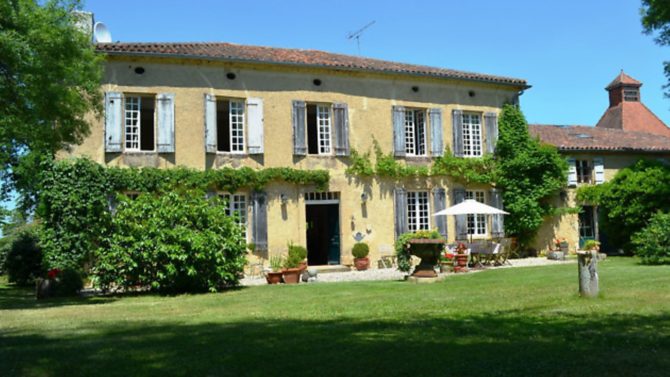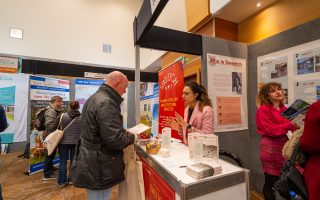Diagnostiques part 1: Asbestos, termites and lead

In France, house buyers receive a dossier of information regarding the general condition of the property. In this series, John Marshall runs through some key elements of the report

ASBESTOS
Asbestos (amiante) within fibre cement products such as drainage pipes, flues and corrugated sheeting is quite safe in situ provided that it is not degraded. The report will clearly state whether or not it is safe. Depending upon their exposure to the elements, fibre cement products should have a very long, safe life; you should expect at least 30 years and often they last for much more. Signs of degrading are reasonably obvious such as crumbling and dust.
It is rare but still possible to find asbestos used as insulation; this is more dangerous as it is not hard but fibrous so particles can enter the air around it and be breathed in or ingested. If this is found in a property it should be removed by a licensed contractor. Fibre cement roof sheeting is waterproof and weatherproof in its own right and is often used to cover agricultural and industrial buildings. The common trade name that has entered the general vocabulary is Eternite. There is also a product designed especially to support canal roof tiles over dwellings. The contour is a perfect fit for canal tiles so they tend to slip less and if they do, for example during high winds, water does not penetrate into the roof space. This, unsurprisingly, is called Canalite. Asbestos has not been used in building products since 1997. Canalite is sometimes dyed red but be wary, some products were similarly dyed before 1997. The diagnostiqueur will do a visual inspection and, rarely, send a sample for analysis. So if they are unsure of the date of the fibre cement, they will err on the side of caution.
Even if the fibre cement is in good order there are two important points that you should keep in mind and bring to the attention of anyone who works on your property. The dust created when sanding or sawing it should not be ingested. Safe working practice is to wear a proper mask and to wet the fibre cement where it is to be worked in order to reduce the creation of dust. Secondly, waste fibre cement should not be taken to a general waste disposal site, but instead to one licensed to handle it. The mairie (town hall) will advise you as to the location of the nearest one and sometimes will even arrange for it to be taken there.

TERMITES
Termites are not found in all departments and therefore a survey for them is not compulsory throughout France. Within some departments, such as Vaucluse, a report is not required in all communes. I understand that they arrived in France on ships bringing timber for barrels into Bordeaux from the southern states of the US, and spread out from there.
While they are winged insects they usually only swarm and change location once a year. They burrow underground from the nest seeking food to return and feed the others; they can do this for several hundred metres and can burrow through stone and concrete. If the diagnostiqueur finds them in a property, he or she is obliged to report them to the mairie. They should be killed, the wood removed or burned and new wood treated against further attack. In some circumstances, the remedy may include fitting termite traps, boxes that contain paper soaked with a chemical. Visiting termites eat from the poisoned chalice, return to the nest and pass it on to others. There should be an annual contract to maintain the traps.
Generally, termites don’t like the cold or draughts, so they burrow into the ends of wood from the ground or walls. You may have seen timber building uprights raised off the ground on metal posts and plates; it is not just to stop the ends rotting. Logs stacked on the ground will be magnets for termites, so wood stored out of doors should be raised off the ground with air beneath by stacking it on a frame of stone, blocks or metal. Termites burrow into the ends of beams and eat the interior, so the diagnostiqueur will tap each timber to listen for a hollow sound. They may then hack off the weak exterior to expose the amount of the damage.
Timber beams are often larger than needed so the loss of some wood does not necessarily mean that the beam becomes structurally unsafe.

This is particularly relevant where there has been damage caused by woodworm (vrillettes) who are surface browsers. A thin layer of a large beam eaten by them can often be hacked down to the good timber underneath and remain adequate for its purpose. Some diagnostiqueurs will also report the presence of other insect attack, such as capricorn beetles, but they will not offer advice on the significance of the damage caused.
LEAD
Lead (plombe) was added to most gloss paint up until 1948 and is still found in some specialist paints. Children and animals have been known to die from gnawing lead-painted woodwork in places such as cots and stables. The diagnostiqueur uses a detector on all painted surfaces that determines the depth and stability of lead. The report will identify the exact location and grade the risk as 1, 2 or 3. If no lead is present it is shown as Grade 0.
Grade 1 is well covered, but you need to know it is there in case you work on the paintwork. Grade 3 is on the surface and degraded or flaking off and is a high risk as it could be easily ingested. The risk is rather like asbestos, in that when it is worked upon by burning off or sanding, the fumes and dust are toxic. An appropriate mask should be worn and you are obliged to warn anyone working at the property that there is lead in the paint so they can take the proper precautions.
My understanding of current law is that where there is paint containing lead near the surface (Grade 3), the vendor must have flaking and loose parts removed and the surface covered with new layers of non-lead paint, so that the lead paint is at a safe depth before the property can be sold.
John Marshall is a chartered valuation surveyor and ‘expert immobilier’ in Languedoc-Roussillon
Tel: 0033 (0)4 68 20 26 48
Share to: Facebook Twitter LinkedIn Email


